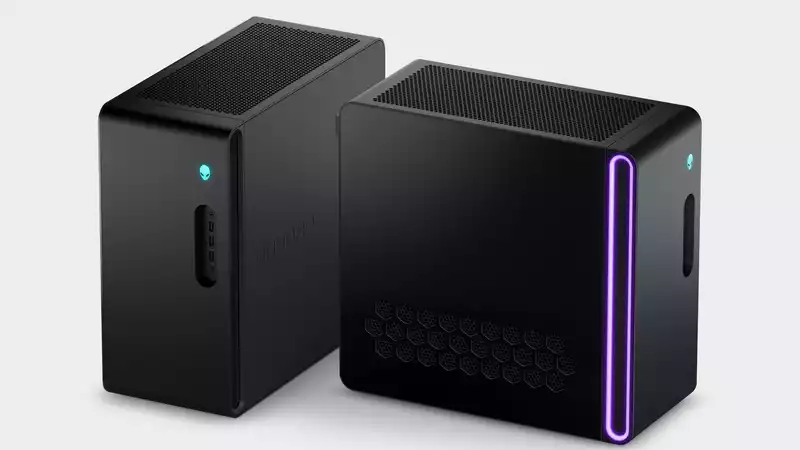Remember how exciting the new Alienware PCs were? Even if you could afford to buy one, the old Alienware wasn't really the fastest PC. But like a Lamborghini that wasn't as fast as a cheap Porsche 911 Turbo, Alienware rigs didn't actually have to be the fastest. They always had to be exotic.
In other words, the world was a more interesting place simply because Alienware PCs existed. But not now. Alienware has been fully assimilated into the Dell corporate collective. The latest Alienware Aurora R16 is here, and it's a generic mid-size box.
In other words, it bears no resemblance to the slightly crazy triangular Area-51-like Alienware of yore. And it lacks even the somewhat bespoke beauty of the current Aurora R15 and the similar R14 before it.
Indeed, the Aurora R15 was, after all, the same kind of machine as the new R16 on the inside. In fact, the R16 offered exactly the same 25.2 liters of internal volume as its predecessor, and the actual metal frame appears to be the same in both systems. The only change was in the outer plastic covering.
Alienware states that it has been refined, streamlined, and more space efficient. Indeed, the R16 is smaller and lighter. But it is also a different box. Too bad.
More to the point, it is a generic-looking box with proprietary Dell-Alienware-style components, which makes future upgrades tricky. Worse for both parties. At least when the chassis design was weird and wonderful, one could forgive a few elements such as motherboards that did not conform to the standard ATX definition.
Anyway, what do we need to know about the new Aurora R16, aside from its now unremarkable proportions? Also, this machine is the quietest Aurora rig to date.
It also has three RGB lighting zones, each consisting of numerous LEDs. Standard specs include Wi-Fi 6E and an 80 Plus Platinum-rated 500W or 1000W PSU; the CPUs are Intel 12th and 13th generation, and the graphics are, as expected, Nvidia RTX 40 series.
Front ports include a 10Gbps USB-C, three 5Gbps USB-A sockets, and a 3.5mm headset jack. On the back are a 20Gbps USB-C port, another 10Gbps USB-C connection, two 5Gbps USB-A, a pair of USB 2.0, 2.5Gbps Ethernet, and an audio output.
Pricing starts at $1,750 with an air-cooled Core i7 13700F and Nvidia RTX 4070 graphics. This base spec buys 16GB of RAM and a 1TB NVMe SSD; the 13900F adds $150, and an upgrade to the RTX 4070 Ti is $200, which is about the same as the standard price difference between the 4070 and 4070 Ti.
There are no higher GPU options at the moment, but they will be added eventually.
Of course, one could legitimately question the practical value of Alienware's legacy design: did the quirky triangular chassis of the Area-51 actually have the heat conduction benefits that Alienware claimed back in 2014? But it was definitely cool looking.
In contrast, the new Aurora R16 is not bad looking. It just doesn't look like Alienware. And the exotic look was, after all, the biggest draw of Alienware PCs. And now we're not sure what the brand is all about.


Comments